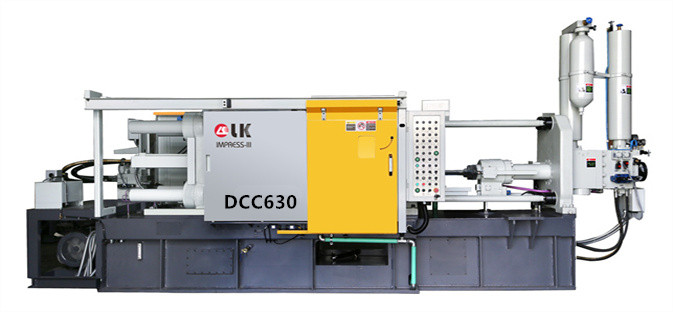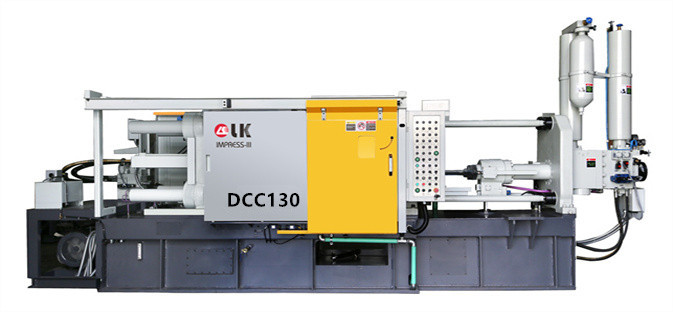What are the Components of Cast Metal?
LK Die Casting Machine / 2024-07-03 16:08:47
Cast metal is a material that is formed by pouring molten metal into a mold and cooling it to solidify. Cast metal has a wide range of applications in
industrial manufacturing, such as automobiles, aviation, construction, and machinery. This article will introduce the main components of cast metal and their
functions in detail to help readers better understand the composition and properties of cast metal.

1. Iron-based cast metal
Iron-based cast metal is the most common type of cast metal, mainly including gray cast iron, ductile iron, and malleable cast iron. Its main components are as follows:
1.1 Carbon (C)
Carbon is the most important alloying element in iron-based cast metal. The content and form of carbon have a significant effect on the properties of cast iron. Carbon can exist in the form of free graphite or combined iron carbide (Fe3C). In gray cast iron, carbon mainly exists in the form of flake graphite, which gives it excellent shock absorption and good machinability. In ductile iron, carbon exists in the form of spheroidal graphite, which improves the strength and toughness of the material.
1.2 Silicon (Si)
Silicon is an important alloying element in iron-based casting metals, usually in an amount of about 1-3%. Silicon helps decompose carbides and promotes the formation of graphite, thereby improving the casting properties and mechanical properties of cast iron. In addition, silicon can also improve the corrosion resistance and oxidation resistance of cast iron.
1.3 Manganese (Mn)
The content of manganese in iron-based casting metals is usually 0.5-1.5%. Manganese can deoxidize and form MnS with sulfur, reducing the embrittlement effect of sulfur on the metal. Manganese can also improve the hardness and wear resistance of cast iron.
1.4 Phosphorus (P) and Sulfur (S)
The content of phosphorus and sulfur in iron-based casting metals is usually low. Phosphorus can improve the fluidity of cast iron, but it will reduce its toughness, so the content is generally controlled below 0.1%. Sulfur has an adverse effect on the mechanical properties of cast iron and should be minimized. Its content is usually controlled below 0.1%.
2. Aluminum-based casting metals
Aluminum-based casting metals are widely used in automotive, aviation, and electronics. Aluminum-based casting alloys mainly include aluminum-silicon alloys, aluminum-copper alloys, and aluminum-magnesium alloys. Their main components are as follows:
2.1 Aluminum (Al)
Aluminum is the main component of aluminum-based casting metals. Its advantages include low density, good electrical and thermal conductivity, and corrosion resistance. Pure aluminum has low strength, and its mechanical properties are usually improved by alloying.
2.2 Silicon (Si)
Silicon is an important alloying element in aluminum-based casting metals, especially in aluminum-silicon alloys, where the silicon content is usually 5-12%. Silicon can significantly improve the casting performance and wear resistance of aluminum alloys while maintaining good corrosion resistance.
2.3 Copper (Cu)
The content of copper in aluminum-based casting metals is usually 2-4%. Copper can improve the strength and hardness of aluminum alloys, but it will reduce their corrosion resistance, so the relationship between the two needs to be balanced when used.
2.4 Magnesium (Mg)
Magnesium is a common alloying element in aluminum-based casting metals, and its content is usually 0.3-1.5%. Magnesium can significantly improve the strength and hardness of aluminum alloys while maintaining good ductility and corrosion resistance.
3. Copper-based casting metals
Copper-based casting metals are widely used in electrical, mechanical and marine fields. Copper-based casting alloys mainly include brass, bronze and nickel silver. Its main components are as follows:
3.1 Copper (Cu)
Copper is the main component of copper-based casting metals and has good electrical conductivity, thermal conductivity and corrosion resistance. Copper alloys are improved by adding other elements to improve their mechanical properties and processing properties.
3.2 Zinc (Zn)
Zinc is an important alloying element in copper-based casting metals, especially in brass, where the zinc content is usually 5-40%. Zinc can improve the strength and hardness of copper alloys, while lowering their melting point and improving casting properties.
3.3 Tin (Sn)
Tin is the main alloying element in bronze, and its content is usually 5-12%. Tin can significantly improve the strength and corrosion resistance of copper alloys while maintaining good casting properties and processability.
3.4 Nickel (Ni)
Nickel is usually present in copper-based casting metals in an amount of 1-30%. Nickel improves the strength, hardness and corrosion resistance of copper alloys, especially at high temperatures.
4. Magnesium-based casting metals
Magnesium-based casting metals are widely used in the automotive and aviation industries due to their low density, high specific strength, good casting properties and recyclability. Their main components are as follows:
4.1 Magnesium (Mg)
Magnesium is the main component of magnesium-based casting metals. Its low density, high specific strength, good shock absorption and casting properties make it an ideal choice for lightweight structural materials.
4.2 Aluminum (Al)
Aluminum is the main alloying element in magnesium-based casting metals, and its content is usually 3-9%. Aluminum can significantly improve the strength and hardness of magnesium alloys, while improving their corrosion resistance and casting properties.
4.3 Zinc (Zn)
Zinc is usually present in magnesium-based casting metals in an amount of 0.5-3%. Zinc can improve the strength and hardness of magnesium alloys, while improving their casting properties and wear resistance.
4.4 Manganese (Mn)
The content of manganese in magnesium-based casting metal is usually 0.1-1%. Manganese can improve the corrosion resistance of magnesium alloys and increase their strength and hardness.
5. Zinc-based casting metal
Zinc-based casting metal is widely used in electronics, electrical appliances and automobiles. Its main components are as follows:
5.1 Zinc (Zn)
Zinc is the main component of zinc-based casting metal. Its advantages include low melting point, good fluidity and casting performance, and excellent corrosion resistance.
5.2 Aluminum (Al)
The content of aluminum in zinc-based casting metal is usually 4-27%. Aluminum can significantly improve the strength and hardness of zinc alloys, while improving their corrosion resistance and casting properties.
5.3 Copper (Cu)
The content of copper in zinc-based casting metal is usually 0.5-3%. Copper can improve the strength and hardness of zinc alloys, while improving their wear resistance and tensile strength.
5.4 Magnesium (Mg)
The content of magnesium in zinc-based casting metal is usually 0.1-0.3%. Magnesium can improve the casting properties and corrosion resistance of zinc alloys, while increasing their strength and hardness.

Summary
The composition of cast metals is complex and diverse, and different alloying elements give metals different performance characteristics. Iron-based, aluminum-based. copper-based, magnesium-based and zinc-based cast metals each have their own unique composition and application areas. By gaining a deeper understanding of the composition of cast metals, readers can better select and use cast metal materials that suit their needs. I hope this article can provide valuable reference information for readers who need to understand the composition of cast metals.
Contact LK Egypt to learn more info about the die-casting machine.
LKAGENT OFFICE DCM
Address: Industry Zone, South of Port Said Kebly, Egypt
Phone: +86 13598704163
Mobile: +20 101 304 3317 +20 150 181 8310
Email: jack@zazmae.com ahmedmahmoud@zazmae.com
#die cast tooling
#trivalent chromate
#rapid prototype casting
#a360 aluminum
#aluminum caster
#aluminum prototype
#ideal 55 slider parts
#density of aluminum kg/mm3
#magnesium sheet metal
#parts of a metal gate
#subcontracting of screw machining for the luxury sector
#wall aluminum
#die casting tooling
#tooling for die casting
#density of aluminium in kg mm3
#clear chromate
#es casting metals
#gating material
#prototype aluminum
#sigma castings
#subcontracting of screw-machining for household appliances
#we squeeze to please machine
#aluminium gravity die casting
#aluminum part
#aluminum rapid prototyping
#nickel casting
#plunger tip for die casting machine
#rapid prototyping aluminium
OTHER CONTENT
-

2024-09-19 14:16:15 LK Cold Chamber Die Casting Machine DCC900 Locking Force: 9000KN Die Height: 400-1000mm Space Between Tie Bars: 930x930mm Shot Weight: 13.5Kg Casting Area Max:2250c㎡
More -

2024-09-19 14:11:06 LK Cold Chamber Die Casting Machine DCC280 Locking Force: 2800KN Die Height: 250-650mm Space Between Tie Bars: 560x560mm Shot Weight: 2.9Kg Casting Area Max:700c㎡
More -

2024-09-19 10:23:07 LK Cold Chamber Die Casting Machine DCC580 Locking Force: 5000KN Die Heigh: 350-850mm Space Between Tie Bars: 760x760mm Shot Weight: 6.9Kg Casting Area Max:1250c㎡
More -

2024-09-19 10:11:20 LK Cold Chamber Die Casting Machine DCC400 Locking Force: 4000KN Die Height: 300-700mm Space Between Tie Bars: 669x669mm Shot Weight: 4.7Kg Casting Area Max:1000c㎡
More

